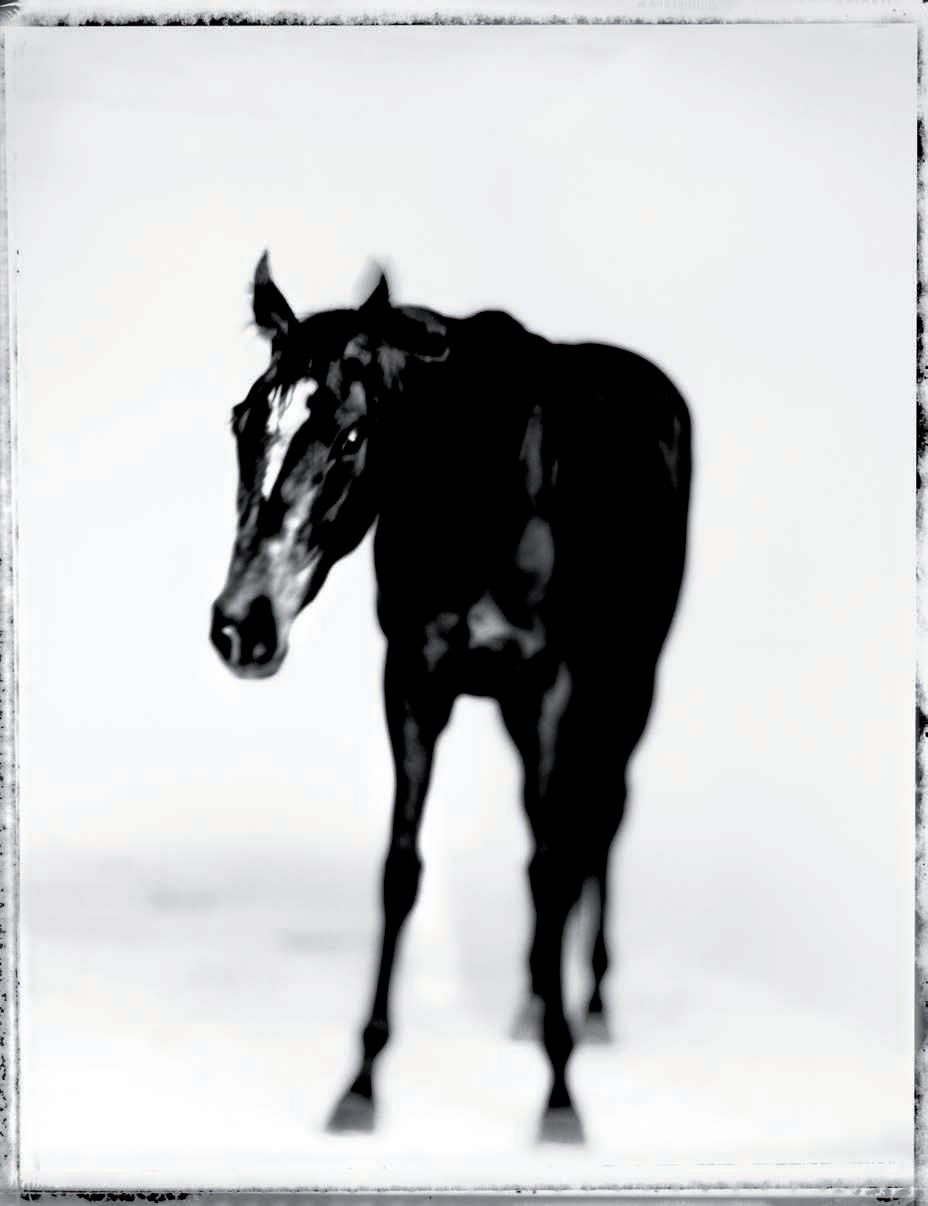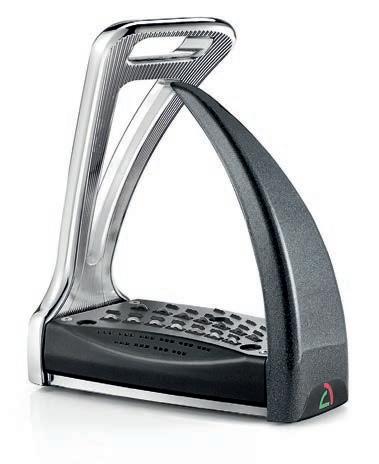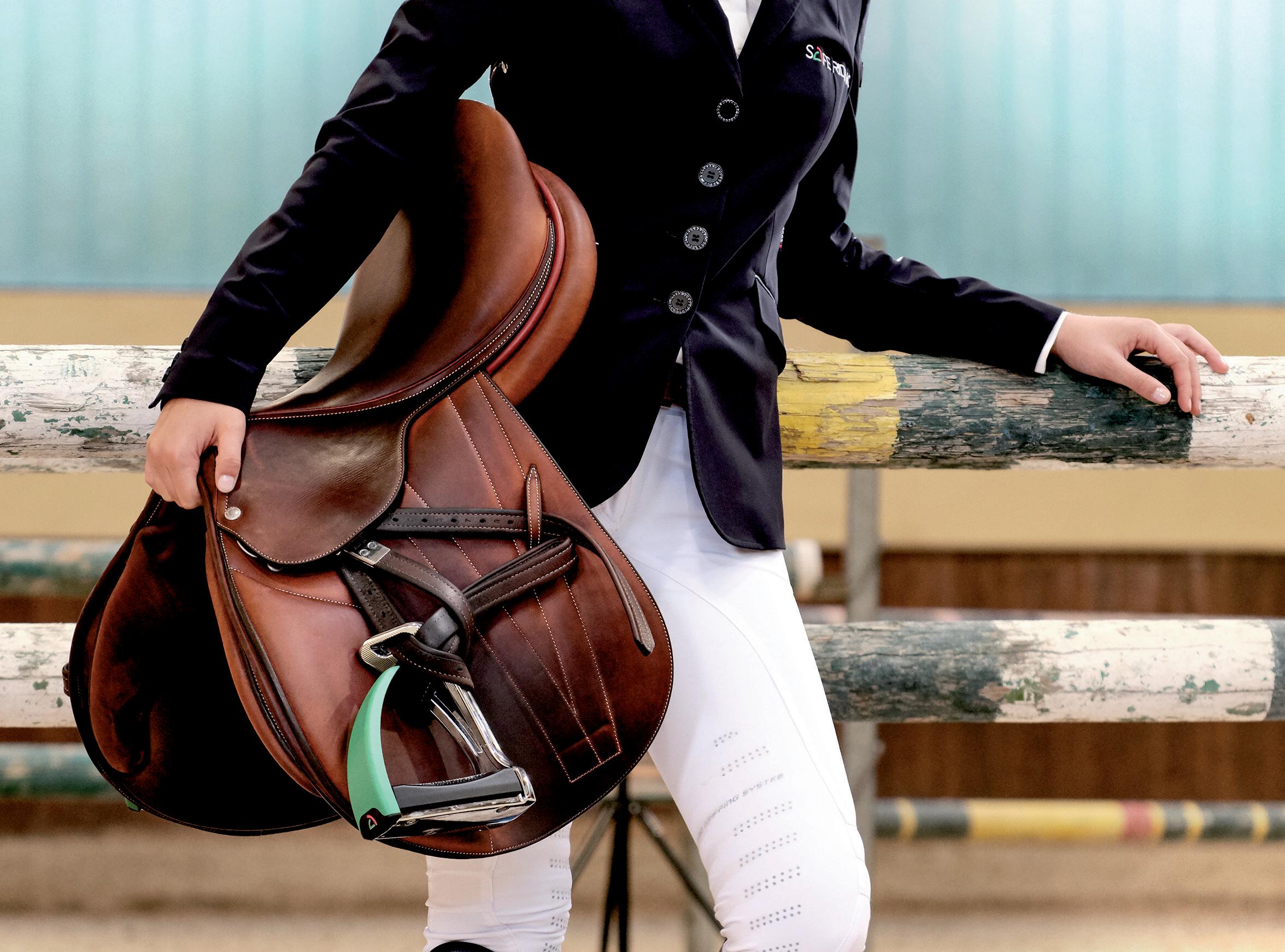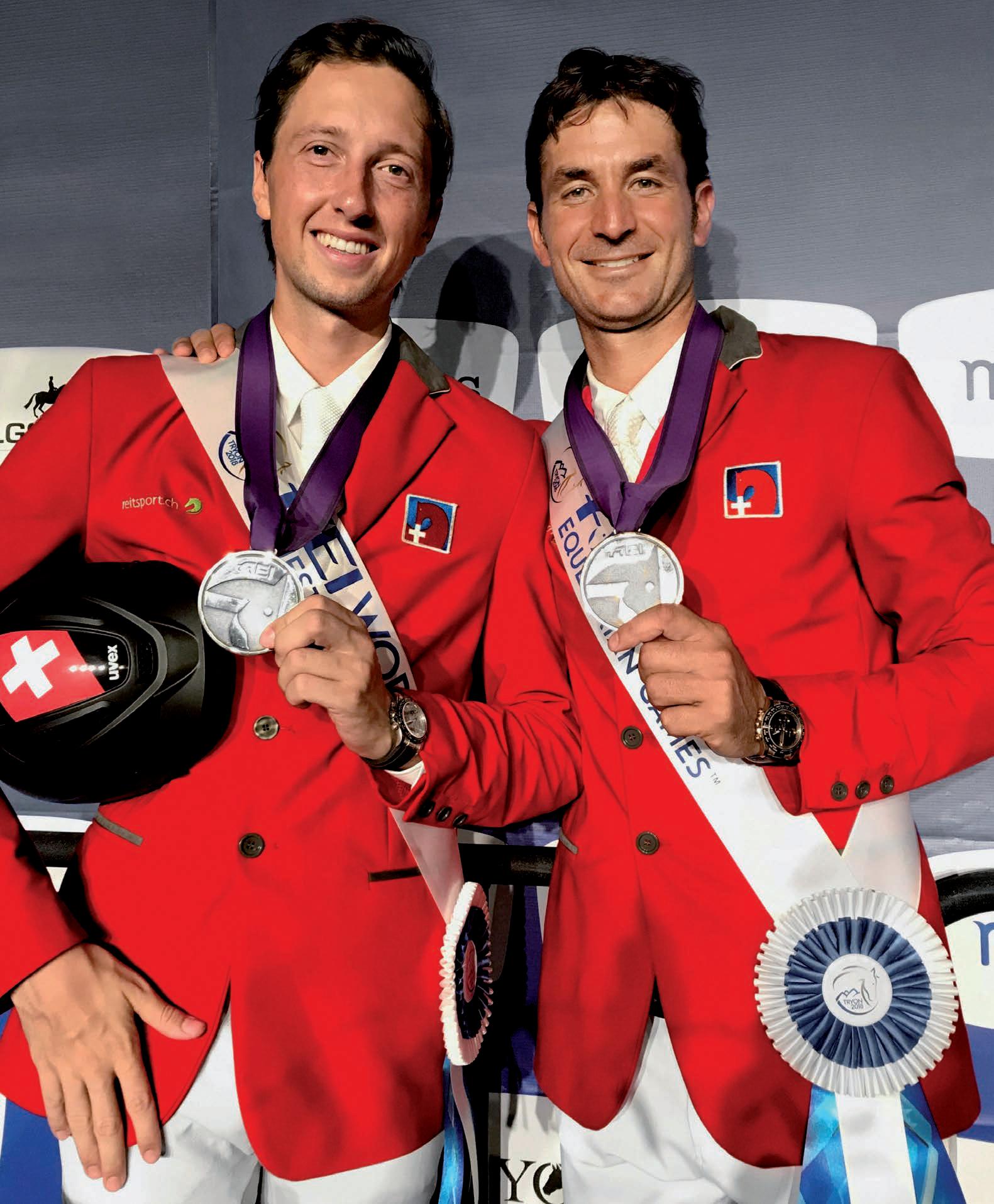
17 minute read
Marco Delogu
from Equestrian Time 3
by alice3786
MARCO DELOGU Un artista purosangue
1
Advertisement
I quattro anni passati come direttore dell’Istituto Italiano di Cultura di Londra sono passati velocemente, caratterizzati dal susseguirsi incessante di attività di grande successo: mostre, concerti, incontri e dibattiti con artisti e ospiti che rappresentano l’eccellenza italiana, presentazioni di libri, iniziative di solidarietà e Festival del Teatro Italiano e della Letteratura. Marco Delogu, sessant’anni e un invidiabile curriculum da fotografo, è rientrato in Italia da poco meno di un anno e si è stabilito in Maremma, a Capalbio, nel casale di campagna che considera come il suo Buen Retiro. “Voglio tornare a fare il fotografo e provare a fare un summer camp di arte e letteratura, la mia eredità culturale dei quattro magnifici anni passati a Belgrave Square”, aveva dichiarato in chiusura di una lunga intervista rilasciata a La Repubblica, poco prima di lasciare l’incarico oltre Manica.
Per un amante dei purosangue vivere nel paese dove la passione per i cavalli esprime un contagio che non ha pari nel mondo intero è stato un’esperienza di gioia non indifferente. I cavalli sono infatti parte integrante della vita di Delogu. Nel giardino della casa a Capalbio, Rumbonorte e Bierso, due cavalli purosangue dal pedigree altisonante ma da tempo ritirati dalle corse, una piccola scuderia, un campo ostacoli, una pista che si ispira per la traiettoria a Piazza del Campo di Siena e un cancello che si apre su chilometri di passeggiate sono gli elementi essenziali che fanno la differenza e determinano una scelta di vita non certamente all’insegna del comfort e della comodità.
Come è nata questa grande passione?
Il cavallo faceva parte del DNA della mia famiglia sia da parte materna che paterna. Il nonno Antonio nella sua azienda agricola alle porte di Sassari aveva i cavalli. Mio padre durante la guerra li utilizzava anche come mezzo di trasporto per percorrere i sei chilometri che quotidianamente doveva effettuare per raggiungere il Liceo Azuni, la scuola che frequentava con compagni di classe Francesco Cossiga e Giovanni
1 Jovian in Barbagia


2
A THOROUGHBRED ARTIST
The four years spent as the director of the Italian Institute of Culture in London have flown by, characterised by a constant series of extremely successful initiatives, with exhibitions, concerts, encounters and debates, hosting artists and guests representing the best of Italian excellence, as well as book presentations, charity events and the Festival of Italian Theatre and Literature. Marco Delogu, sixty years old and with an enviable CV as a photographer, returned to Italy a little over a year ago and settled in Maremma, in Capalbio, living in the country house he considers as his “Buen Retiro”. “Now I want to start working as a photographer again and try and organise an art and literature summer camp as my cultural legacy following these four wonderful years spent in Belgrave Square” he said at the end of a lengthy interview with the daily newspaper La Repubblica, just before leaving his job in the United Kingdom. For a man with a passion for thoroughbreds, living in a country where love for horses is expressed in a way unequalled anywhere else in the world, was a significantly joyful experience. Horses, in fact, are an integral part of Delogu’s life. In the garden of his house in Capalbio there are two thoroughbreds with aristocratic blood lines, Rumbonorte and Bierso, now long-retired from racing, as well as a small stable block, an arena and a track that is inspired by Piazza del Campo in Siena and a gate that opens onto kilometres of hacking paths. These are the essential elements that make all the difference and have resulted in his choosing a life that is certainly not marked by comforts and conveniences.
Where did this great passion come from?
Horses are part of my family’s DNA both on the maternal and the paternal side. My grandfather Antonio had horses on his farm near Sassari and during the war my father used them as transport to travel the six kilometres he had to cover every day to go to school at the Azuni Highschool, with his friends Francesco Cossiga and Giovanni Berlinguer. For my mother’s family instead, horses were business and their successful transport company was started using carriages long before they moved on to buses. I always had horses nearby. I was born and grew up in Rome, but I spent every summer in Sardinia, in Barbagia, on my grandfather’s farm at Cala Gonone. This small village inhabited by three hundred souls, mainly all involved in sheep farming and breeding Anglo Arab horses, was where three of Italy’s greatest jockeys were born: Fabio and Mauro Branca and Silvano Mulas, the only Italian jockey to have won both the Palio in Siena and the Derby. I had fun with them galloping as fast as we could along the many dirt roads and endless beaches. When I was 14, instead of giving me a scooter my father gave me a horse. He bought me one of the many thoroughbreds at the Capannelle racetrack that are retired from racing because they aren’t fast enough. His name was Urbino and he was a very good horse and i kept him at our house in the country in Tuscany where I could ride him every weekend.
2 Dieci fantini del Palio di Siena Ten jockeys of the Siena’s Palio
3 La curva di San Martino al Palio di Siena The curve of San Martino to Siena’s Palio
3
When did you start going to the races?
Once again it was thanks to my father. I remember travelling by train to Agnano to watch the Lotteria Prize and we never missed important meetings at Capannelle. It was at the track in Rome that I saw the great Derbies won by the Dormello Olgiata in years now remembered as the golden age of Italian racing. My father often took me with him when he travelled abroad to attend medical conferences and so I was lucky enough to watch many races in foreign countries at famous tracks such as Solvalla and Longchamps.
And then this passion also resulted in you becoming the owner of a racehorse?
Yes. Passion and my friendship with a very special trainer, Gianluca Bietolini, and my friend the actor Massimo Reale with whom I worked for many years. I am very proud of my horse because out of the 102 races he ran we won 33 in Capalbio, Florence and Pisa. This passion, which had been dormant for many years, was rekindled after my father’s death when I was thirty. During that same period, I started to ride again in Maremma. My first two horses were not racehorses and were a gift from the author Susanna Tamaro.
Tell us a little about the time you spent in London.
It was magnificent because at all the racetracks I had many Italian friends who have become important in the world of racing, allowing me to enjoy racing in the most exclusive circles, including Ascot’s Royal Enclosure. Moving around in the paddock or at the prizegiving and seeing the Aga Khan, Niarchos, Queen Elizabeth and Al Macktoum just a few yards away is certainly not something that happens every day. I managed to watch all the classic races and the most exciting day of all was seeing Andrea Atzeni on Postponed, trained by da Luca Cumani, winning the King George and Queen Elisabeth Stakes in 2015 in a photo-finish with Frankie Dettori. That was unforgettable. There were other unique memories such as my exhibition of the photographs for the book entitled “The Thirty Assassins”, portraits of the jockeys in Siena’s Palio, hosted by the Newmarket Museum and then riding through Hyde Park on horses used by the Queen for parades. In 2016 there was a spending review regarding the stables in Knightsbridge and about 90 people were recruited in diplomatic circles to exercise the horses very early in the morning every day. I was one of them. Racing at Ascot enchanted me and I was lucky enough to visit the most famous racetrack in the world with a pass for the Royal Enclosure, the area that in addition to the Queen hosts important guests such as Niarchos, the Aga Khan and Sheikh Al Macktoum. The famous National Horse Racing Museum in the Palace at Newmarket hosted the photographic exhibition for my book “The Thirty Assassins”, with portraits of the Siena Palio’s jockeys as well as a retrospective of the best photographs of horses in my portfolio. I cavalli li ho sempre avuti a portata di mano e di gioco. 4 Berlinguer. Per la famiglia materna i cavalli erano invece lavoro. La loro fiorente azienda di trasporti è nata con le carrozze ancor prima che con i pullman. I cavalli li ho sempre avuti a portata di mano e di gioco. Sono nato e cresciuto a Roma ma tutte le estati le passavo in Sardegna, in Barbagia, nella tenuta del nonno, a Cala Gonone. Questo paesino di trecento anime, per la maggior parte dedite alla pastorizia e all’allevamento degli anglo-arabi, ha dato i natali a tre fantini fuoriclasse del panorama italiano: Fabio e Mauro Branca e Silvano Mulas, unico fantino italiano quest’ultimo che ha vinto sia il Palio di Siena che il Derby. Io mi divertivo con loro galoppando a più non posso tra le tante strade bianche e l’interminabile spiaggia. Quando ho compiuto i 14 anni invece del motorino mio padre mi ha regalato un cavallo. Acquistò per me, all’ippodromo Capannelle, uno dei tanti purosangue che lasciano presto le piste perché non sufficientemente veloci. Si chiamava Urbino, era molto bravo e lo tenevamo nella nostra casa di campagna in Toscana dove potevo montarlo tutti i week-end.
Come ha iniziato a frequentare gli ippodromi?
Sempre grazie a mio padre. Ricordo che andavamo in treno ad Agnano a vedere il Lotteria e non mancavamo mai gli appuntamenti di rito alle Capannelle. Sulla pista di Roma ho visto i grandi Derby della Dormello Olgiata in anni che si ricordano come momento d’oro dell’ippica in Italia. Spesso quando papà andava all’estero per partecipare a convegni medici, mi portava con sè e ho avuto dunque la possibilità di vedere molte corse all’estero in luoghi culto come gli ippodromi di Solvalla e Longchamps.
4-5 BillViola e Uva Rara, dalla serie “The white studio” BillViola and Uva Rara, from the series “The white studio”

5

La passione l’ha anche portata a diventare proprietario di purosangue?
Sì. Passione ed amicizia con un allenatore speciale come Gianluca Bietolini e l’amico attore Massimo Reale, con cui ho condiviso anni di attività. Ne vado francamente fiero perché su 102 corse disputate ne abbiamo vinte ben 33 a Capalbio, Firenze e Pisa. La passione, sopita per molti anni, si è riaccesa dopo la morte di mio padre quando avevo trent’anni. Contemporaneamente ho iniziato anche a rimontare in Maremma. I primi due cavalli non erano da corsa e me li ha regalati la scrittrice Susanna Tamaro.
Come ha vissuto da appassionato il periodo trascorso a Londra?
Magnificamente perché in tutti gli ippodromi avevo molti amici italiani che sono autorità nel mondo delle corse inglese e che mi davano la possibilità di vivere lo spettacolo nei ring più esclusivi compreso il Royal Enclosure di Ascot. Girarsi e trovare nel tondino di presentazione o in premiazione a pochi metri di distanza l’Aga Khan, Niarchos, la Regina Elisabetta e Al Macktoum non è certo routine. Sono riuscito a vedere tutte le corse classiche. L’emozione più grande? Nel 2015, la vittoria di Andrea Atzeni con Postponed, allenato da Luca Cumani, nelle King George Queen Elisabeth Stakes in fotofinish con Frankie Dettori. Momento veramente indimenticabile. Altri ricordi da serbare come unici, la mia mostra delle foto del libro “Trenta assassini”, i ritratti dei fantini del Palio di Siena, ospitata nel Museo di Newmarket e le passeggiate a Hyde Park con i cavalli da parata della Regina Elisabetta. Nel 2016 c’è stata una spending revue alle scuderie di Knightbridge Hyde e nell’ambito del mondo diplomatico sono state reclutate 90 persone che avevano il compito a turno di assicurare la mattina molto presto il lavoro quotidiano dei cavalli. Io ero tra loro. Ascot mi ha stregato e ho avuto l’opportunità di vivere il più celebrato ippodromo del pianeta con il pass per il Royal Enclosure, l’area che accoglie insieme alla Regina personaggi della levatura di Niarchos, l’Aga Khan, lo sceicco Al Macktoum. Il celebre Museo di Newmarket, ricavato all’interno della casa di Re Giorgio I ha ospitato Newmarket la mostra delle foto del mio libro “Trenta Assassini”, con i ritratti dei fantini del Palio di Siena e la retrospettiva sulle più belle foto di cavalli che ho nel mio portfolio.
Punctum Press, la sua casa editrice, ha pubblicato diversi lavori con tema il cavallo?
Sì, ho realizzato due edizioni del libro Fotofinish, Quattro Studi di cavalli e diverse monografie. Proprio in questi giorno è in distribuzione un lavoro molto bello realizzato durante il lock down: Le Piazze invisibili. Ventuno piazze raccontate ciascuna da un fotografo ed uno scrittore.
La passione per i cavalli e l’arte l’ha portato anche a promuovere per HippoGroup Roma Capannelle una vera e propria collezione di opere, tutte a firma di pittrici e dedicate a Lydia Tesio.
In occasione della corsa dedicata all’allevatrice del mitico Ribot, ogni autunno viene presentata un’opera realizzata da un’artista. I quadri sono tutti esposti nella Club House dell’ippodromo di Roma e sono presentati nella serata di gala che precede l’evento sportivo. Sono molto fiero di questo percorso che è iniziato con Giosetta Fioroni ormai vent’anni orsono. Per me è un impegno d’obbligo”. Il tempo passa e la passione rimane sempre viva.
6 Jovian con la luna piena Jovian with a full moon
7-8 Jovian e Peppola, dalla serie “The black sun” Jovian and Peppola, from the series “The black sun”

6
Your publishing house Punctum Press has presented a number of books in which horses are the leading characters, right?
I have published two editions of the book entitled Fotofinish, Four Studies of Horses and various monographs. “The Invisible Squares”, a rather beautiful book created during the lock down is being distributed at the moment and is a book depicting twenty-one city squares each narrated by a photographer and an author.
This passion for horses and for art also resulted in your sponsoring a real collection of works of art all signed by female artists and dedicated to Lydia Tesio for the Hippo Group Roma Capannelle.
Every year in the autumn, at the race named after the breeder of the legendary Ribot, there is the presentation of a work of art by a female artist. These paintings are all on show in the Roman racetrack’s Club House and presented at the gala evening that precedes the race. I am extremely proud of this project that began with Giosetta Fioroni about twenty years ago. As far as I am concerned it is a duty I willingly undertake”. Time may go by, but his passion for horses lives on.
7


8
© Safe Riding/Pierluigi Fossa

Safe Riding, a brand owned exclusively by Tenuta Montemagno Horses, has designed and manufactures the S2 Safety First stirrups, mainly aimed at female riders guaranteeing a safe, comfortable and elegant seat, both for professional and amateur riders. Created using a new alloy of magnesium and aluminium, these stirrups guarantee lady riders a high degree of resistance and noteworthy lightness. Riding therefore becomes a safer and more pleasant experience even in conditions involving stressful dynamics. The chrome-plated finish adds particular shine and greater resistance to wear and tear. The safety provided by Safe Riding stirrups is total, certified and guaranteed by international patents. The arch opens in all directions at 90° and, in the event of a fall, allows the rider’s foot to be completed released avoiding any chance of it getting caught. Comfort is guaranteed by a cushioned platform equipped with a gripping system that adapts to all forms of stress. The 45° angle of the curve provides greater comfort for the horse and a better position for the rider. The basic but sophisticated design and the many different choices available for personalising the covers mean that the S2 Safety First Stirrups are the ideal solution for our lady riders who are very attentive to design as well as to technical aspects. S2 Stirrups are available in three different colours, all with a chrome-plated finish: Silver Chrome, Satin Copper and Santorini Black. Elegance and style are guaranteed by covers that can easily be changed at any time to better express one’s own personality.
STAFFE S2 SAFETY FIRST
Safe Riding, brand di proprietà esclusiva di Tenuta Montemagno Horses, ha progettato e produce S2 Safety First, la staffa dedicata a un pubblico prevalentemente femminile che assicura una monta sicura, confortevole ed elegante, per i professionisti e gli amanti dell’equitazione. Realizzata in una nuova lega di Magnesio e Alluminio, la staffa assicura alle amazzoni elevata resistenza e notevole leggerezza. La cavalcata risulta così maggiormente gradevole e sicura anche in condizioni di forte stress dinamico. La finitura cromata aggiunge alle superfici del prodotto una particolare lucentezza e maggiore resistenza all’usura.
La sicurezza delle staffe Safe Riding è totale, certificata e coperta da brevetti depositati a livello internazionale. L’arco si apre in ogni direzione a 90° e, in caso di caduta, permette al cavaliere di liberare completamente il piede evitando di rimanere “instaffato”.
Il comfort è garantito dalla pedana ammortizzata dotata di un sistema di gripping in grado di adattarsi a qualsiasi sollecitazione. L’angolo di curvatura di 45° della struttura assicura maggiore comfort al cavallo e una posizione più corretta al cavaliere.
Il design essenziale, ma ricercato, e le ampie possibilità di personalizzazione delle cover fanno sì che la staffa S2 Safety First rappresenti la soluzione ideale per il pubblico femminile, molto attento al design, oltre che ai contenuti tecnici.
La staffa S2 è disponibile in tre differenti colorazioni, tutte con finitura cromata: Silver Chrome, Satin Copper e Santorini Black. Eleganza e stile sono assicurate da cover che possono essere cambiate facilmente e in ogni momento, per manifestare al meglio la propria personalità.
S2 Silver Chrome with BlackPearl cover (Limited Edition 2020)

S2 Santorini Black cutout

safe_riding @SafeRidingOfficial
www.saferiding.it
© Safe Riding/Pierluigi Fossa

The box
Quattro differenti linee consentono di esprimere infinite sfumature. • Contemporary, quando si vuole giocare con i colori; • Premium, quando si desidera curare ogni più piccolo dettaglio; • Luxury, per esprimere uno stile unico e al top; • Flags, per rappresentare sé stessi e il proprio Paese. Safe Riding è un brand di proprietà esclusiva di Tenuta Montemagno Horses e nasce dal know-how nell’allevamento dei cavalli e dalla passione per l’equitazione dei fondatori. Un’azienda interamente italiana, nata con la missione di offrire una monta sicura, confortevole ed elegante ai cavalieri di ogni latitudine. La prima soluzione lanciata da Safe Riding, nel 2016, è stata la staffa S1 Safety First, ideata e progettata da cavalieri per cavalieri. Un innovativo sistema, frutto di un design interamente Made in Italy, combina sicurezza, comfort, eleganza e infinite possibilità di personalizzazione. Dal 2018 Safe Riding è sponsor ufficiale della FISE.
Four different styles allow riders to choose between endless nuances. • Contemporary, when wanting to play around with colours; • Premium, when wanting to address even the tiniest detail; • Luxury, to express a unique and top style; • Flags, to represent oneself and one’s country. Safe Riding is a brand owned exclusively by Tenuta Montemagno Horses and is the result of the founders’ know-how in breeding horses and passion for riding. It is an entirely Italian company founded with a mission to provide safe, comfortable and elegant riding for riders everywhere in the world. The first solution proposed by Safe Riding in 2016, was the S1 Safety First Stirrups, created and designed by riders for riders. With an innovative system that is the result of design entirely Made in Italy, these stirrups combine safety, comfort, elegance and an infinite choice of personal touches. Safe Riding has been FISE’s official sponsor since 2018.
S2 Silver Chrome with Logo Mania cover (Limited Edition 2020)












